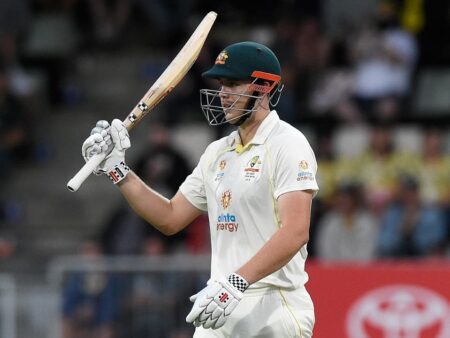Beyond a simple sphere, the Trionda is a testament to cutting-edge engineering, designed to adapt, perform, and elevate the beautiful game across a continent.
At its heart, football remains gloriously simple: two teams, two goals, and one round object. Yet, this “round object” has evolved into a sophisticated piece of athletic equipment, a silent protagonist often overlooked amidst the roar of the crowd. For the 2026 FIFA World Cup, hosted across the vast landscapes of the U.S., Canada, and Mexico, Adidas unveils its latest marvel: the Trionda.
The Name, The Nations, The Vibe
The Trionda isn`t just a catchy name; it`s a reflection of the colossal tournament it serves. “Tri” subtly references the three host nations – a triumvirate of football passion. Its vibrant design weaves together blue for the U.S., red for Canada, and green for Mexico, symbolizing a continental embrace. Meanwhile, “onda,” the Spanish word for wave or vibe, speaks to the energy and cultural currents that will define this historic World Cup. It`s a ball designed to carry the spirit of the event, both literally and figuratively.
Conquering Climates: From Vancouver`s Mist to Mexico City`s Altitude
One of the 2026 World Cup`s greatest logistical challenges is its geographical spread. Sixteen host cities, from the Pacific Northwest`s humidity to Mexico City`s thin air, present an unprecedented array of environmental conditions. For a ball to perform consistently, regardless of whether it`s soaring through a humid Atlanta summer or bouncing on a cooler Vancouver evening, is a Herculean task.
“Because nothing says `fair play` quite like a ball that behaves differently depending on whether you`re in sunny Guadalajara or chilly Vancouver.”
Adidas engineers tackled this head-on. The Trionda features an enhanced texture and an `extra grip` outer shell, meticulously engineered to ensure the ball feels and performs identically at a player`s feet across all venues. This wasn`t achieved through guesswork. Extensive laboratory testing, simulating varied humidity and temperature levels, preceded real-world trials. Professional players from MLS`s Vancouver Whitecaps to Liga MX`s Tigres provided crucial feedback, validating its performance in the very environments it will eventually dominate.
The Unseen Brain: AI and the Quest for Precision
Invisible to the eye, but central to its intelligence, is the Trionda`s advanced AI-powered chip. Building on the foundation laid by its predecessor, the Al Rihla (used in Qatar 2022), this chip has been relocated to the side of the ball for optimized data collection. Its purpose is twofold:
- Referee Assistance: By providing real-time data, the chip aims to empower officials to make faster, more accurate decisions, contributing to a smoother, fairer game.
- Future Innovation: The wealth of data collected – from touch frequency during a dribble to detailed flight characteristics – offers an unprecedented understanding of the game. This insight is invaluable for Adidas`s continuous pursuit of innovation, ensuring future match balls are always a step ahead of football`s evolving tactical demands.
Imagine knowing precisely how a ball behaves under every conceivable kick and header; this technology is unlocking new frontiers in performance analysis, previously thought impossible.
Aerodynamics Reimagined: Learning from Past “Disasters”
The journey of World Cup balls hasn`t always been smooth. The infamous Jabulani (2010) and, to a lesser extent, the Telstar 18 (2018), were criticized by goalkeepers for unpredictable trajectories and difficult control, sometimes resembling a “beach ball.” Adidas has taken these lessons to heart.
“Gone are the days when a goalkeeper`s worst enemy wasn`t the striker, but the ball itself, performing aerial acrobatics worthy of a circus act.”
The Trionda`s design is a direct response to these aerodynamic challenges. Unlike the 20 geometric panels of Al Rihla, the Trionda boasts just four fluid panels, seamlessly stitched together. Crucially, the combination of panel shape, seam length, and debossing lines on the outer shell has been meticulously engineered for superior flight stability, launch speed, in-flight speed, swerve, and precision. This isn`t just aesthetic; it`s a testament to rigorous scientific testing, including wind-tunnel analysis at institutions like Loughborough University and sophisticated robo-testing in Adidas`s own labs.
The Ultimate Test: Players and the Pitch
While lab coats and wind tunnels provide invaluable data, the ultimate validation comes from the players themselves. From amateur enthusiasts to elite professionals, countless feet have kicked, passed, and struck the Trionda during its extensive development. This human element ensures that the scientific precision translates into a ball that feels intuitive, reliable, and responsive on the pitch.
Conclusion: The Silent Star of 2026
The Trionda represents more than just the official match ball for the 2026 World Cup; it embodies a sophisticated fusion of sports science, technological innovation, and artistic design. It`s a testament to Adidas`s commitment to pushing the boundaries of what a football can be, transforming a simple piece of equipment into a climate-adaptive, data-rich, aerodynamically precise instrument. Come June 2026, as the world watches the greatest show on turf, the Trionda will quietly perform its role – an essential, yet “invisible,” participant, ensuring that the focus remains, as it should, on the players, the drama, and the beautiful game itself.






